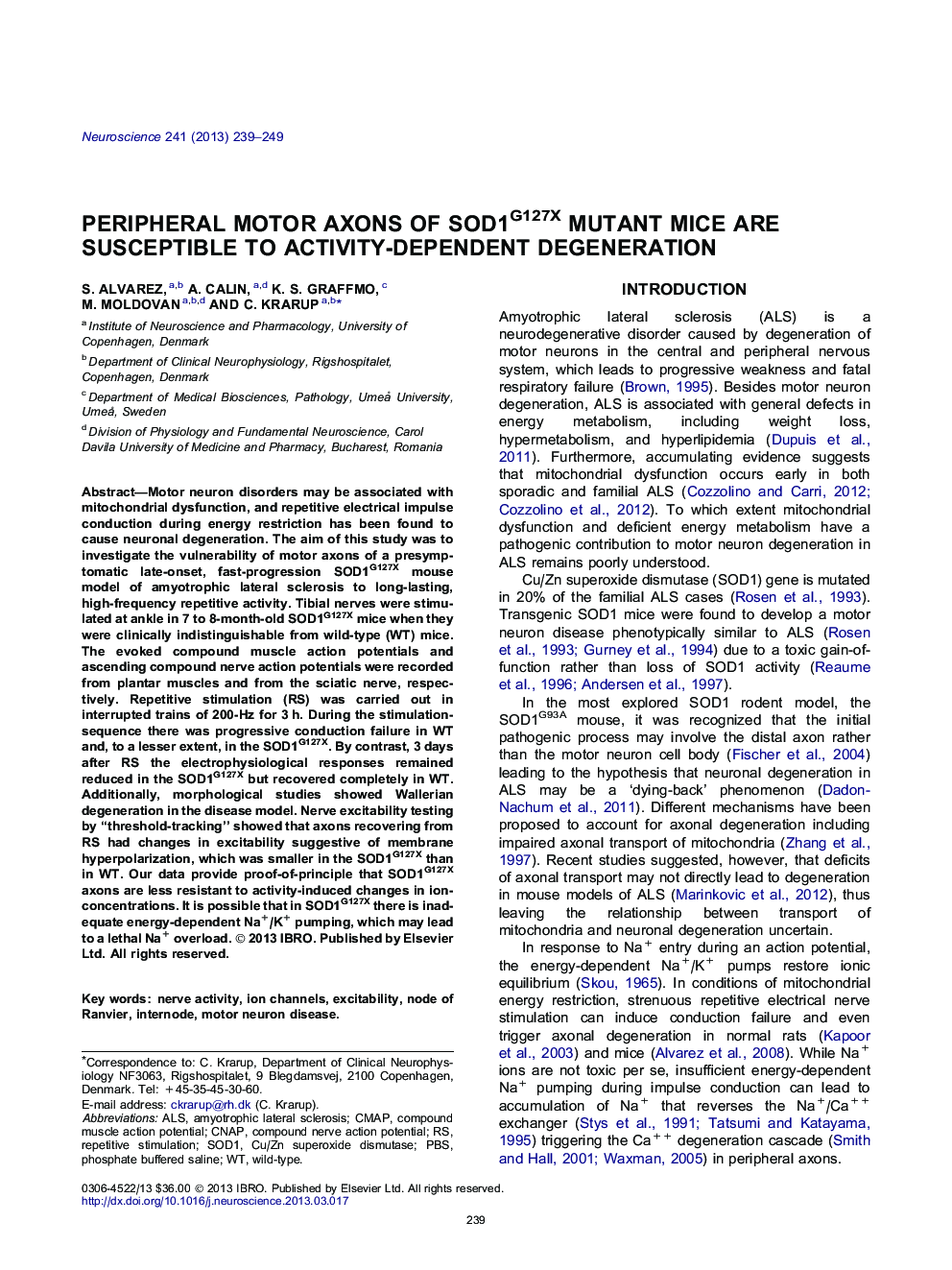| Article ID | Journal | Published Year | Pages | File Type |
|---|---|---|---|---|
| 4337958 | Neuroscience | 2013 | 11 Pages |
•Mitochondrial energy restriction triggers degeneration of electrically active axons.•Wild-type mice recovered after tibial nerve stimulation with 200 Hz for 3 h.•In presymptomatic 7- to 8-month SOD1G127X mouse stimulation caused partial degeneration.•Large fiber loss was associated with reduced post-activity hyperpolarization.•We provide proof of concept of reduced energy-dependent Na+ pumping in SOD1G127X.
Motor neuron disorders may be associated with mitochondrial dysfunction, and repetitive electrical impulse conduction during energy restriction has been found to cause neuronal degeneration. The aim of this study was to investigate the vulnerability of motor axons of a presymptomatic late-onset, fast-progression SOD1G127X mouse model of amyotrophic lateral sclerosis to long-lasting, high-frequency repetitive activity. Tibial nerves were stimulated at ankle in 7 to 8-month-old SOD1G127X mice when they were clinically indistinguishable from wild-type (WT) mice. The evoked compound muscle action potentials and ascending compound nerve action potentials were recorded from plantar muscles and from the sciatic nerve, respectively. Repetitive stimulation (RS) was carried out in interrupted trains of 200-Hz for 3 h. During the stimulation-sequence there was progressive conduction failure in WT and, to a lesser extent, in the SOD1G127X. By contrast, 3 days after RS the electrophysiological responses remained reduced in the SOD1G127X but recovered completely in WT. Additionally, morphological studies showed Wallerian degeneration in the disease model. Nerve excitability testing by “threshold-tracking” showed that axons recovering from RS had changes in excitability suggestive of membrane hyperpolarization, which was smaller in the SOD1G127X than in WT. Our data provide proof-of-principle that SOD1G127X axons are less resistant to activity-induced changes in ion-concentrations. It is possible that in SOD1G127X there is inadequate energy-dependent Na+/K+ pumping, which may lead to a lethal Na+ overload.
